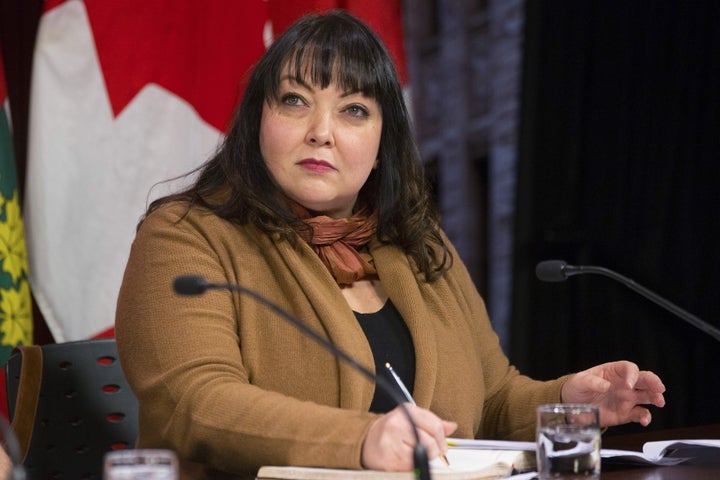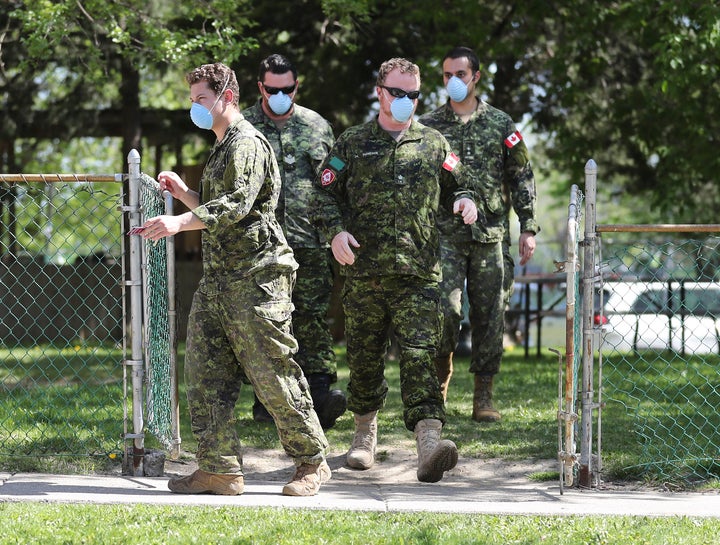The Ontario Ministry of Long-Term Care acted “perilously late” and “underused” its powers to mandate takeovers of long-term care homes during the pandemic, according to a new report.
As of Dec. 3, the ministry had issued at least six mandatory management orders and 14 voluntary contracts to homes that needed more support managing a COVID-19 outbreak.
A voluntary agreement — where a home makes a contract with a hospital — allows for the hospital to provide additional support, though at the control of the facility’s potentially negligent management, Natalie Mehra, executive director of the Ontario Health Coalition (OHC) said at a Thursday press conference.
Management orders, meanwhile, are issued when a home’s management is “deemed incompetent” and a hospital takes over. Mehra said the support provided through these orders varies, but typically it means hospital staff take over management functions at the home, and help with infection control and staffing.
But many homes experiencing bad COVID-19 outbreaks have not received management orders — and other interventions have come “inexplicably late,” only after high infection rates and death tolls, the OHC said in its report.


“There’s just massive scores of homes with large outbreaks with no interventions at all,” Mehra said.
She said although some hospitals continue to support long-term care homes, they face capacity issues that prevent them from helping in the same way they did during the first wave.
“The problem is they don’t have the capacity to do that, and there was no plan in the summer made to build that capacity,” Mehra said.
The province should have brought back retired nurses and done massive recruitment for teams that could support homes, she added.
More than 2,500 long-term care residents have died of COVID-19 during the pandemic, according to provincial data. And the numbers are growing through the second wave. By the OHC’s count, 18 residents have died in the last 24 hours and there have been 115 new COVID-19 infections in the last day in long-term care homes across the province.

Many of Ontario’s long-term care homes have “crumbling” staffing levels that are worse than in the spring when the pandemic first took hold, and there are also “critical” problems in cohorting residents, Mehra said. Staff at more than a dozen homes say they are short on personal protective equipment (PPE), such as gowns, gloves, disinfecting wipes and N95 masks, she said.
The ministry has given $540 million for homes to deal with the pandemic’s second wave, including funding for staffing support.
Because we’re at the point where we were in the first wave when the military was called in.
Natalie Mehra
But with the number of new infections and deaths continuing to grow, Mehra is left wondering why there isn’t more help for homes dealing with outbreaks.
“Because we’re at the point where we were in the first wave when the military was called in.”
The Ministry of Long-Term Care is “committed to doing everything we can” to support long-term care homes during the pandemic, Mark Nesbitt, a ministry spokesperson, said in a statement to HuffPost Canada.
Measures taken by the ministry during the pandemic include “rigorous” inspections for the province’s long-term care homes, emergency funding, staffing support and increased testing, as well as appointing temporary management to some homes.
He said some homes and hospitals will continue with “informal partnerships” after a mandatory management order or voluntary management contract ends.
The ministry has approved temporary management of 25 long-term care homes, Nesbitt said. The province has also announced $1.9 billion in funding to create more than 27,000 new jobs in long-term care.
Interventions came ‘too late’
The province’s emergency interventions — including sending in military teams, rapid response teams from hospitals or support from the Red Cross — have been “improvements,” the OHC said.
But it added these measures have been inconsistent and often implemented too slowly.
Dr. Amit Arya, a palliative care physician and OHC board member, emphasized the need for a low threshold for intervention in care homes.
When there are more than 100 cases in a home and people are crying out for help, the response is often “too late,” he said.
Lack of accountability a ‘huge failing’
Arya has been in homes during the pandemic where his team would say, “Imagine if we were here two weeks ago … we would have saved lives and we would have saved so many people from suffering.”
He pointed to Quebec, which appointed an infection control manager to every long-term care home over the summer.
If that had happened in Ontario, he said, “the outcome would have been likely very different.”
There is no accountability …
Natalie Mehra
“It’s very appalling that even at this stage, we don’t have accountability around infection control, we don’t have government oversight in each of the homes about what is going on on a day-to-day basis, how they’re cohorting patients, how they’re testing, how they’re donning and doffing PPE,” Arya said.
Nesbitt, the ministry spokesperson, said the ministry works with the local public health unit and health integration network, along with other partners, when a long-term care home is experiencing an outbreak. This includes working to improve infection prevention and control measures, shoring up staffing and ensuring homes have adequate PPE supplies, as well as daily calls, he said.
However, OHC’s Mehra said the ministry hasn’t used its powers to issue fines or revoke home’s licenses during the pandemic.
“There is no accountability, no real accountability, for the homes that fail to provide the basics of life and the basics of safety,” she said. “That is a huge, huge failing.”
Calling all HuffPost superfans!
Sign up for membership to become a founding member and help shape HuffPost’s next chapter
Credit: Source link